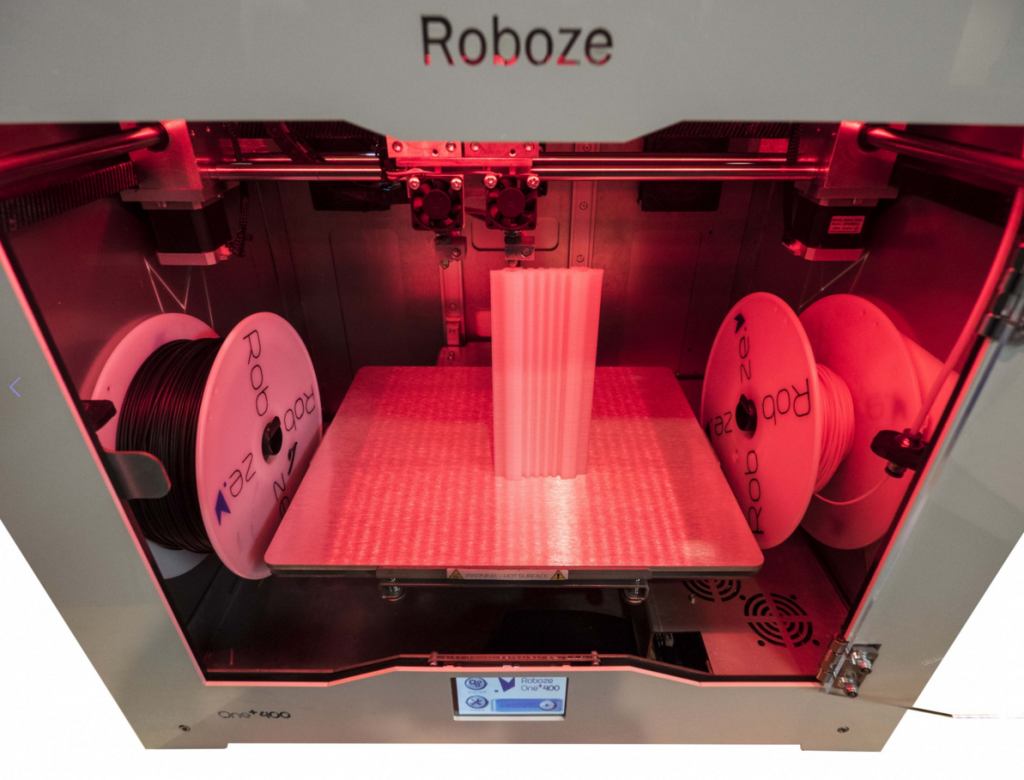Roboze Performs Rigorous Stress Test on PEEK 3D Printing Materials, Under Continuous Heat for Eight Hours
 Many individuals and small companies, as well as large-scale manufacturers, have decided to take the leap into 3D printing and additive manufacturing today. And while it’s one thing to begin shopping for 3D printers and envisioning all that you are going to produce—whether it’s on a smaller scale making a jewelry from your home, or the largest in producing high-quality parts for aerospace—materials are a crucial part of the quotient. Much of your initial foray into what you use for 3D printing might be trial and error, and most likely, you will find yourself becoming more of a materials scientist than you ever imagined.
Many individuals and small companies, as well as large-scale manufacturers, have decided to take the leap into 3D printing and additive manufacturing today. And while it’s one thing to begin shopping for 3D printers and envisioning all that you are going to produce—whether it’s on a smaller scale making a jewelry from your home, or the largest in producing high-quality parts for aerospace—materials are a crucial part of the quotient. Much of your initial foray into what you use for 3D printing might be trial and error, and most likely, you will find yourself becoming more of a materials scientist than you ever imagined.
Chances are most people interested in 3D printing have heard a bit about PEEK (polyetheretherketone) by now, even if they aren’t quite sure what it’s all about. Generally only used at the higher level for industrial markets, we’ve not seen this material offered at the desktop very often, with the exception of a few companies, and Roboze is one of them, offering up their One+400 printer, and allowing for a world of new possibilities with both hardware and materials.
Now, Roboze is doing some of the work for everyone else in evaluating PEEK materials further in a unique test. In conducting a thermal inertia test, they put what is known to be one of the highest-performing polymers under unseemly stress, observing how it reacts at high and continuous temperatures.
 The Roboze team was particularly curious as to how the PEEK material would react under such high temperatures for an extended amount of time, when compared to more standard conditions. During the experiment, the Roboze One+400 was used to fabricate a block 25 x 25 x 10 mm in dimension. The material was then subjected to a heated electric resistor at 245°C, without a break, for 8 hours and 30 minutes. The result was that it lost only 35% of its properties, exhibiting the expected superiority in both thermal resistance and mechanical properties.
The Roboze team was particularly curious as to how the PEEK material would react under such high temperatures for an extended amount of time, when compared to more standard conditions. During the experiment, the Roboze One+400 was used to fabricate a block 25 x 25 x 10 mm in dimension. The material was then subjected to a heated electric resistor at 245°C, without a break, for 8 hours and 30 minutes. The result was that it lost only 35% of its properties, exhibiting the expected superiority in both thermal resistance and mechanical properties.
The Roboze team points out that this is exactly why PEEK is so popular for ‘high shock applications,’ as well as those requiring lengthy exposure to high temperatures. It’s appropriate for use in industries such as:
- Aerospace
- Defense
- Automotive
- Mechanical
- Aeronautic
With this latest PEEK challenge, Roboze is triumphant in surpassing the typical limits of high-thermoplastic polymers. According to their team, they will continue to strive and excel, seeking out new, high-quality materials, as well as engineering and ‘revolutionizing solutions’ for the 3D printing world.
Roboze is headquartered in Bari, Italy, and has carved out a niche for themselves mainly as the only manufacturer of beltless desktop 3D printers which are able to make components in 12 different materials, to include PEEK, PEI, PC/ABS, TPU, CARBON-PA, and more. Their machines are meant to be extremely durable and long-lasting—just like the components they are responsible for producing. The overall goal is to offer professionals the opportunity to use one-of-a-kind printing technology that is affordable yet advanced, and allows for the use of highly technical materials for many advanced applications.
Check out the following video for more details on Roboze and their PEEK stress test. Discuss further in the PEEK 3D Printing Material Stress Test forum over at 3DPB.com.
Subscribe to Our Email Newsletter
Stay up-to-date on all the latest news from the 3D printing industry and receive information and offers from third party vendors.
You May Also Like
Precision at the Microscale: UK Researchers Advance Medical Devices with BMF’s 3D Printing Tech
University of Nottingham researchers are using Boston Micro Fabrication‘s (BMF) 3D printing technology to develop medical devices that improve compatibility with human tissue. Funded by a UK grant, this project...
3D Printing Webinar and Event Roundup: April 21, 2024
It’s another busy week of webinars and events, starting with Hannover Messe in Germany and continuing with Metalcasting Congress, Chinaplas, TechBlick’s Innovation Festival, and more. Stratasys continues its advanced training...
3D Printing Webinar and Event Roundup: March 17, 2024
It’s another busy week of webinars and events, including SALMED 2024 and AM Forum in Berlin. Stratasys continues its in-person training and is offering two webinars, ASTM is holding a...
3D Printed Micro Antenna is 15% Smaller and 6X Lighter
Horizon Microtechnologies has achieved success in creating a high-frequency D-Band horn antenna through micro 3D printing. However, this achievement did not rely solely on 3D printing; it involved a combination...






























